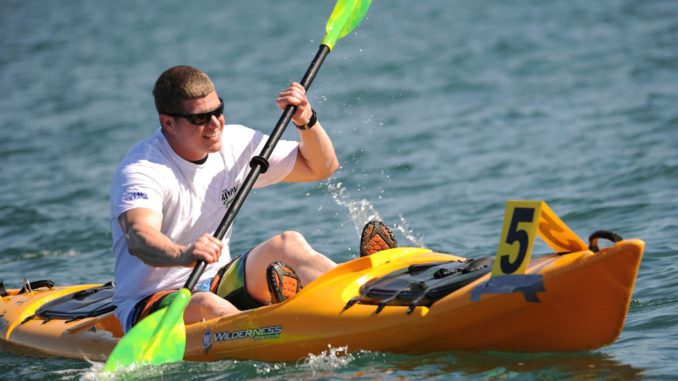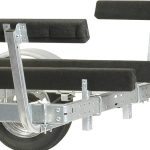
A kayak is a little, narrow type of watercraft which is pushed by a twofold bladed paddle. The conventional kayak has a secured deck and at least one cockpit, each seating one paddler. The cockpit is now and again secured by a shower deck that keeps the passage of water from waves or splash and makes it feasible for appropriately gifted kayakers to roll the kayak: that is, to overturn and right it without it loading with water or
launching the paddler.
A kayak enables you to achieve picturesque beachside campgrounds, quietly explore an estuary, appreciate stunning perspectives that can't be seen from shore, get in a morning exercise around the lake or simply play in the water with the children.
Transportation of Kayak
Kayaks are available in different sizes which can be from 5 feet to 6 feet. This makes it a bit difficult for you to transport it to the nearby shore.
Transporting your kayak is something imperative to consider before acquiring your watercraft, and possibly your vehicle! While it’s conceivable to transport any kayak on pretty much any vehicle, some rack frameworks will end up being preferable alternatives over others, and there is the uncommon event where a rack of any kind isn't conceivable on a specific vehicle. Inquiring about all parts of transportation is a critical advance if
you’re in the market for another kayak.
There are steps that need to be followed in order to transport your Kayak
Convey a kayak: With two individuals, every individual holds a get handle and lifts. In case you're without anyone else's input, you can get
the kayak onto a shoulder.
How to put a kayak on a vehicle: The least demanding path is with the assistance of a companion? You'll lift the vessel up by each end and place it on the rack. In case you're solo, there are a few choices relying upon your rack framework.
Secure a kayak: Using cam ties is the most straightforward and speediest approach to secure the pontoon.
How to transport Kayak on Truck?
The most straightforward technique for transportation is just tossing the kayak in the back of a pickup truck and securing it with a couple tie downs. Essentially leave the rear end down and enable the kayak to stand out the back of the truck, with a warning on the end. There are truck bed extenders available, for example, the Extend-A-Truck which will slide into your hitch beneficiary and go about as an additional help out the back of the truck.
In the event that you have a pickup truck with a hitch recipient, we prescribe utilizing this item to transport your kayak. It’s least demanding to stack and empty the kayak, it’s one of the most secure approaches to secure a kayak to a vehicle, and it’s extremely efficient in correlation with a rooftop rack framework.
Most trucks, including all Chevrolets, will have secure circles low on the dividers of the bed. In the event that your trucks secure circles are mid-path or at the highest point of the bed dividers, you will need to either introduce secondary selling circles bring down on the dividers, or figure out how to legitimately secure it around the guard, or other pieces of the bed.
You’ll need to address the contrary end of the kayak. While securing that finish of the kayak, run the lash through the bow (or stern) handle of the kayak to counteract sliding.
The technique additionally can swap closes so that as opposed to expanding outward, it broadens vertically, behind the rear end. On the off chance that you include a solitary traverse the taxi of the truck you would then be able to transport the kayak over the truck, departing the bed
open for capacity. This is an incredible alternative for longer treks and end of the week escapes when you require the bed space for additional capacity.
We’ve seen a few people leave the back end up and butt one end of the kayak against the rear end with the kayak reaching out forward at a point over the taxi of the truck. This isn't prudent in light of the fact that the breeze truly gets the kayak in this position and if even the smallest thing turns out badly with a secure or a rope it could cause a lamentable mishap. Also the additional tallness it adds to your vehicle, definitely constraining the determination of drive-through eateries accessible and other correspondingly calamitous burdens.
Littler kayaks like a smaller than expected can now and again be transported in the bed of a truck with the back end up, however, make certain to butt the finish of the kayak against the forward side of the truck overnight boardinghouse the opposite end of the kayak over the shut rear end. The breeze power will then drive the kayak into the bed rather than out of it. Also, obviously, dependable use no less than two ties downs for even the most limited treks.
Some key points on how to strap your Kayak
According to Allen Moore the least demanding and most regular approach to secure a kayak to your auto is with cam buckle ties. You'll basically need to sustain the ties through the clasps, pull them tight, and tighten them down.
Make sure that your kayak is focused (front to back) between the crossbars with your truck. It is likewise important that the boat is as level as conceivable to maintain a strategic distance from pointless breeze obstruction. This will make the ride more secure, and less demanding on the
kayak and rooftop rack framework.
Take your cam buckle tie and position it so the clasp is lying in favor of the kayak. It ought to be a couple of creeps above and to the side of one of the crossbars, and you would then be able to toss the opposite end of the tie over the kayak to the opposite side of the truck.
Go over to the opposite side of the vehicle and snatch the last detail of the lash. Circle the tie underneath the crossbar to within where it joins to the vehicle. This keeps the tie from slipping off the finish of the crossbar while driving.
Now head over to the main site again and snatch the rest of the lash. Circle it around the crossbar, indeed keeping it to within where it connects to the vehicle. Carry it into the cam buckle, and tighten the lash down.
Do this same process with the same ties with another cam buckle tie on the other crossbar. Once the two ties are set up, fix the two. Make certain not to over tighten them, however, an excess of strain will disfigure the plastic bodies on your kayak or possibly break a fiberglass kayak.
The kayak should now be secure. Check to guarantee they are determinedly secured to the highest point of your auto by getting each finish of the kayak and shaking it. You will have a smidgen of development, yet there shouldn't be excessive.






